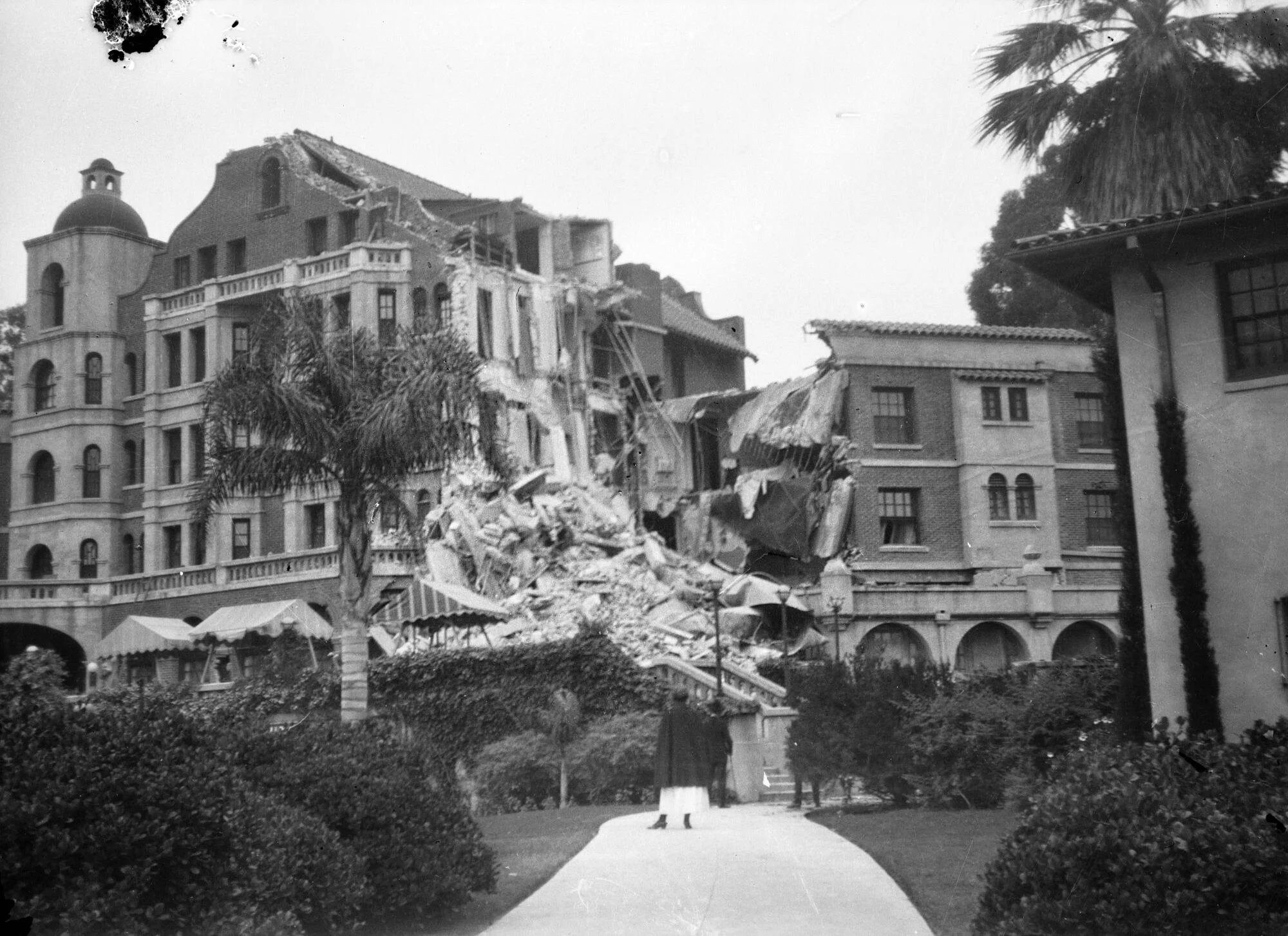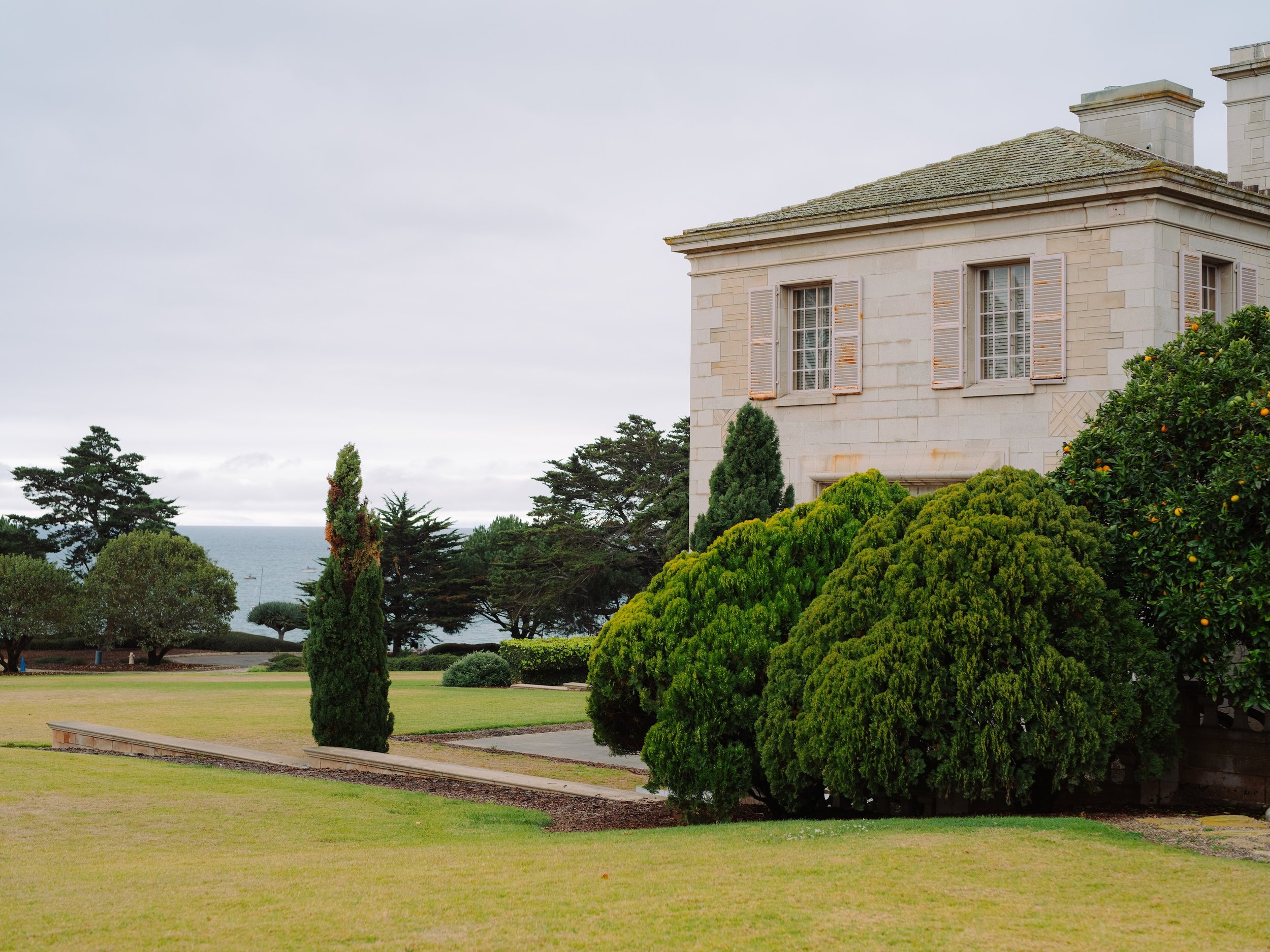The Golden Era of Santa Barbara Architecture: Why 1900–1939 Reigns Supreme (and Where to Find It)
A City Built on Beauty and Resilience
Drive down nearly any leafy lane in Montecito or stroll the tiled corridors of downtown Santa Barbara, and you’ll feel it—a rare harmony between architecture, landscape, and light. From 1900 to 1939, the region underwent a design renaissance that shaped not only its skyline but also its soul.
Arched passageways, terracotta rooftops, hand-painted tiles, and whitewashed courtyards became the language of a new California dream—a blend of Old World craftsmanship and coastal ease that still defines Santa Barbara’s timeless appeal.
This forty-year stretch, bookended by vision and resilience, remains the golden thread connecting the city’s storied past to its enduring identity.
How the 1925 Earthquake Changed Everything
No story of Santa Barbara architecture is complete without the 1925 earthquake. Measuring 6.8 on the Richter scale, it devastated the downtown core—destroying hundreds of buildings but sparking one of the most inspired rebuilds in American history.
Rather than modernize in haste, civic leaders, artists, and architects saw an opportunity to unify the city’s look and feel. Inspired by the region’s missions, Andalusian villages, and Mediterranean climate, they adopted a shared vision: Spanish Colonial Revival. From this decision emerged the signature aesthetic we know today—white stucco walls, red clay roofs, wrought ironwork, lush courtyards, and the interplay of sun and shadow. What began as recovery became a cultural rebirth.
Meet the Architects Who Shaped a Region
George Washington Smith
A Pennsylvania painter turned architect, Smith became the father of Santa Barbara’s Spanish Colonial Revival movement. His estates—Casa del Herrero and El Hogar, among others—embody quiet grandeur and craftsmanship rooted in Andalusian simplicity. His legacy defines Montecito’s architectural DNA.
Reginald Johnson
Known for the Biltmore Hotel, Bellosguardo, the Lotusland estate, and Rancho San Carlos, Johnson blended Mediterranean, Italianate, and classical influences into designs of timeless proportion and grace. His homes feel both stately and livable, perfectly attuned to the coastal landscape.
William Mooser III
Mooser helped shape downtown’s rebirth through landmarks such as the iconic Santa Barbara County Courthouse—a masterpiece of civic beauty that remains one of California’s most photographed buildings.
Lutah Maria Riggs
Santa Barbara’s first licensed female architect, Riggs, worked under Smith before establishing her own practice. Her design of the Vedanta Temple demonstrated her mastery of various architectural styles and solidified her as a trailblazer in regional architecture.
Some Noted Estates from the Golden Era
Casa del Herrero (1925)
George Washington Smith’s Andalusian estate remains a National Historic Landmark and a living museum of craftsmanship—tilework, gardens, and architecture in perfect harmony.
📍 1387 East Valley Road, Montecito
El Fureidis (1906)
Designed by Bertram Goodhue, this palatial Mediterranean-Persian hybrid—later featured in Scarface—is famed for its domed ceilings and reflecting pools.
📍 Private residence, Montecito
Lotusland (1919–1930s)
Originally designed by Reginald Johnson, later transformed by Ganna Walska into a botanical wonderland—part surrealist art, part horticultural masterpiece.
📍 695 Ashley Road, Montecito (by reservation)
Rancho San Carlos (1929)
Spanning over 200 acres, this 30,000-square-foot Monterey Colonial estate by Reginald Johnson remains one of California’s largest and most architecturally intact historic homes.
📍 Private residence, Montecito
Bellosguardo (1933)
Built for the Clark family, this Beaux-Arts estate overlooking East Beach stands as an untouched time capsule—an echo of American high society at its peak.
📍 1407 East Cabrillo Blvd, Santa Barbara (Bellosguardo Foundation)
Bellosguardo, Reginald Johnson
The Coral Casino & Biltmore Hotel (1920s–1937)
Gardner A. Dailey’s Coral Casino and Johnson’s Biltmore (now Rosewood Miramar’s neighbor) epitomize coastal sophistication—white stucco, ocean views, and enduring glamour.
📍 Channel Drive, Montecito
Constantia (1917)
This Georgian-style estate showcases the era's architectural diversity—formal yet warm, with Italianate flourishes that balance Montecito’s Mediterranean leanings.
📍 Private residence, Montecito
Why 1900–1939 Still Reigns Supreme
The early 20th century was a convergence of art, necessity, and vision. Architects built for climate, beauty, and endurance—using local stone, handmade tile, and craftsmanship rarely seen today. These homes weren’t just monuments to wealth; they were expressions of restraint and belonging.
While modern design often chases novelty, these estates prove that timelessness is born of proportion, materiality, and respect for place.
In an age of fast builds and fleeting trends, Montecito’s early estates stand as quiet testaments to patience and permanence.
Where to Experience It Today
You don’t need an invitation to feel this legacy.
Walk the courthouse gardens, tour Casa del Herrero, or visit Lotusland. Even a drive along East Valley Road, Sycamore Canyon, or Hot Springs reveals a living museum of architectural history—each gate and archway whispering of another era.
And for those dreaming of a home that carries this same spirit, Santa Barbara’s golden era isn’t gone—it’s simply waiting to be rediscovered.
Final Thoughts
At Montecito Valley, we believe great homes carry stories. The estates of 1900–1939 remind us that architecture is more than structure—it’s the soul of a place.
If you’re drawn to heritage design and enduring craftsmanship, we’d love to help you find a property that embodies Santa Barbara’s golden age.
Contact us to explore Montecito and Santa Barbara estates rich in history and detail—or follow @montecitovalley for local architecture, culture, and California living.
Constantia, Montecito, CA



